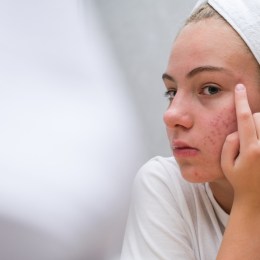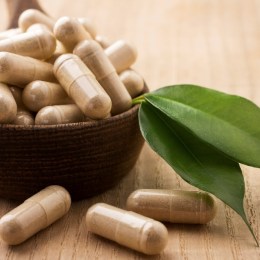Why the mental health of injectors and aesthetic practitioners deserves more attention than ever before.
In an industry driven by precision, results, and client satisfaction, the emotional demands placed on aesthetic practitioners are often overshadowed by their clinical obligations. Yet behind every perfect lip, softened frown line, or rejuvenated complexion is a professional managing not just the physical outcomes, but the mental toll that can come with them.
As aesthetic medicine continues to grow, so too does the need to protect the well-being of those delivering it. Unlike hospital environments where teams are often equipped to deal with adverse events collectively, aesthetic practitioners, particularly those in solo practice, often carry the emotional weight alone. The pressure to deliver consistent, flawless outcomes is high, while public conversations about mental health support remain relatively scarce.
A Profession That Demands Perfection
The aesthetic field, by its nature, attracts high-achieving individuals. Many injectors and dermal therapists are perfectionists, trained to notice the subtlest irregularities, and expected to correct them with confidence and speed. While these qualities benefit patients, they can leave clinicians vulnerable to self-criticism, especially when complications occur.
Vascular occlusions, poor treatment outcomes, or even a client’s dissatisfaction, even when unwarranted, can trigger intense emotional responses. Shame, doubt, and anxiety often follow, compounded by the perceived need to maintain composure and professionalism.
Burnout and Rumination in Private Practice
While terms like burnout are well-recognised in healthcare more broadly, they remain under-discussed in the aesthetic realm. Many practitioners work in isolated environments or are business owners themselves, which means their personal well-being is frequently deprioritised in favour of operational demands. Without structured support or regular team debriefs, practitioners may find themselves ruminating on clinical decisions long after hours, questioning their competence or fearing reputational damage.
Common warning signs include emotional detachment, loss of joy in work, chronic fatigue, and avoiding clinical days altogether. Left unaddressed, these patterns can lead to burnout or even premature exit from the profession.
Normalising the Emotional Experience
One of the most powerful steps we can take as an industry is to normalise the emotional side of this work. This means acknowledging that adverse events don’t just require clinical protocols, they also require emotional processing. It means shifting the narrative from “don’t make mistakes” to “you’re human, and you’re not alone.”

We spoke to leading practitioner and educator Dr Kate Jameson about her own experience navigating the emotional impact of complications, and the changes she believes are needed to better support those in the field.
Kate, you’ve spoken candidly about the emotional toll of complications. Can you describe what goes through your mind in the immediate aftermath of an adverse event like a vascular occlusion?
In the immediate aftermath, it’s like time slows down, but your heart races. There’s an acute rush of adrenaline and a hyper-focus on clinical decision-making. But layered beneath that is panic. A voice that whispers, Did I just harm someone?
You’re navigating protocols while managing a patient’s fear and trying to appear composed. Afterwards, once the crisis passes, it hits you: shame, guilt, self-doubt. Even when you do everything right, you replay every step obsessively. It’s an emotionally isolating experience because we’re trained to be calm under pressure, but not necessarily to process the emotional weight that follows.
In a field that values precision and control, how can practitioners process the feelings of self-doubt or failure that often follow unexpected outcomes?
It starts with acknowledging that self-doubt is a human response, not a professional weakness. The aesthetics industry sets high standards; we are expected to deliver perfection, which leaves little room for the unpredictable nature of medicine. I’ve found it helpful to reframe these moments as part of the growth process rather than evidence of failure. Peer conversations, clinical debriefs, and focusing on my professional development have helped me separate my identity from the outcome.
We also need to remember that complications don’t equal incompetence. They’re a clinical reality and something we must be prepared to manage every time we treat a patient. Processing these emotions openly and with compassion for ourselves is how we maintain both resilience and integrity.
Burnout and rumination are common yet under-discussed in aesthetics. What signs should clinicians look out for in themselves and their peers?
Clinicians may notice a growing sense of dread before clinic days, emotional detachment from patients, or a lack of satisfaction from procedures they once enjoyed.
Rumination often shows up as replaying scenarios in your mind, second-guessing every choice, even outside of work hours. Watch for mood swings, irritability, or isolation. Subtle signs in peers might include withdrawal from team discussions or reluctance to take on new patients.
Burnout rarely arrives dramatically, it creeps in. Recognising these signs early, especially in a field that prizes composure, is essential.
What strategies or practices have helped you personally rebuild confidence after a high-stress incident?
Rebuilding confidence begins with reflection. I allow myself to review what happened clinically, and also explore what it brought up emotionally. Supervision and clinical mentorship have been invaluable, especially in the earlier stages of my career. Having a large clinical team around me has ensured I feel supported.
I also invest in ongoing education, especially advanced training and ultrasound use, which reinforces both skill and confidence.
The biggest shift has come from connecting with peers who’ve been through similar events. Just hearing “I’ve been there too” can be a lifeline. Confidence doesn’t return all at once, it rebuilds with each safe, successful patient interaction where you remind yourself that you are capable, prepared, and still growing.
How can clinics better foster a culture of psychological safety, especially for newer injectors facing their first complications?
It starts at the top. Clinic leaders must model vulnerability and openness, sharing their own past complications helps normalise them. New injectors should never feel they’re alone or that mistakes must be hidden. Formal debriefs after clinical incidents, regular team check-ins, and mentorship structures are key.
New staff should know exactly who to call in a crisis, not just clinically, but emotionally. Importantly, avoid a blame culture. Instead of “what went wrong,” ask “what did we learn?” Psychological safety means practitioners feel safe to speak up, ask questions, and show uncertainty, because those qualities ultimately lead to better care and safer outcomes.
If you could change one thing about how the aesthetics industry handles practitioner mental health, what would it be?
I would mandate emotional resilience training as part of aesthetic education, right alongside anatomy and complications management. We prepare injectors for adverse events clinically, but not psychologically. The emotional cost of this work is often hidden, and many leave the industry not because they’re incapable, but because they don’t feel supported.
We need to embed mental health awareness into the culture of aesthetics: mentorship, debriefs, burnout training, and access to peer support. Changing the narrative from “don’t mess up” to “you’re human, and we’re here for you” would create a stronger, safer, and more sustainable future for all of us.
Read our latest issue below:
There are 5 ways you can catch up with SPA+CLINIC
- Our quarterly print magazine, delivered to your door. Subscribe here.
- Our website, which is updated daily with its own completely unique content and breaking news.
- Our weekly newsletter – free to your inbox! Subscribe here.
- Our digital magazine – click here to view previous issues.
- Our social media – see daily updates on our Instagram, Facebook & Linkedin




